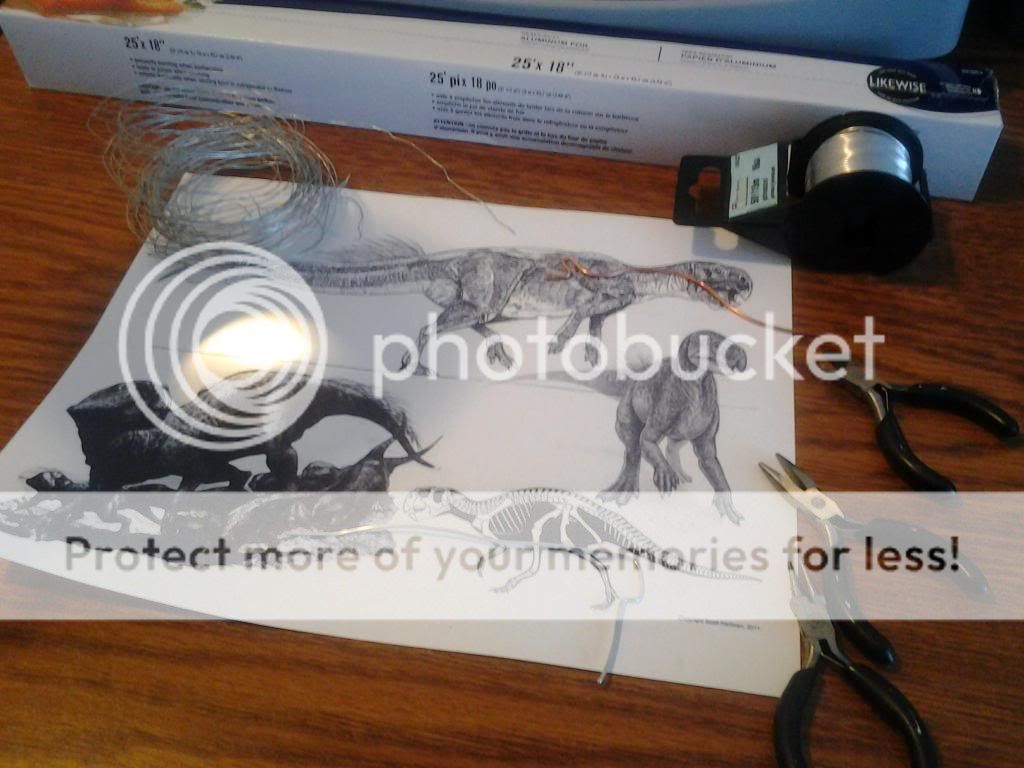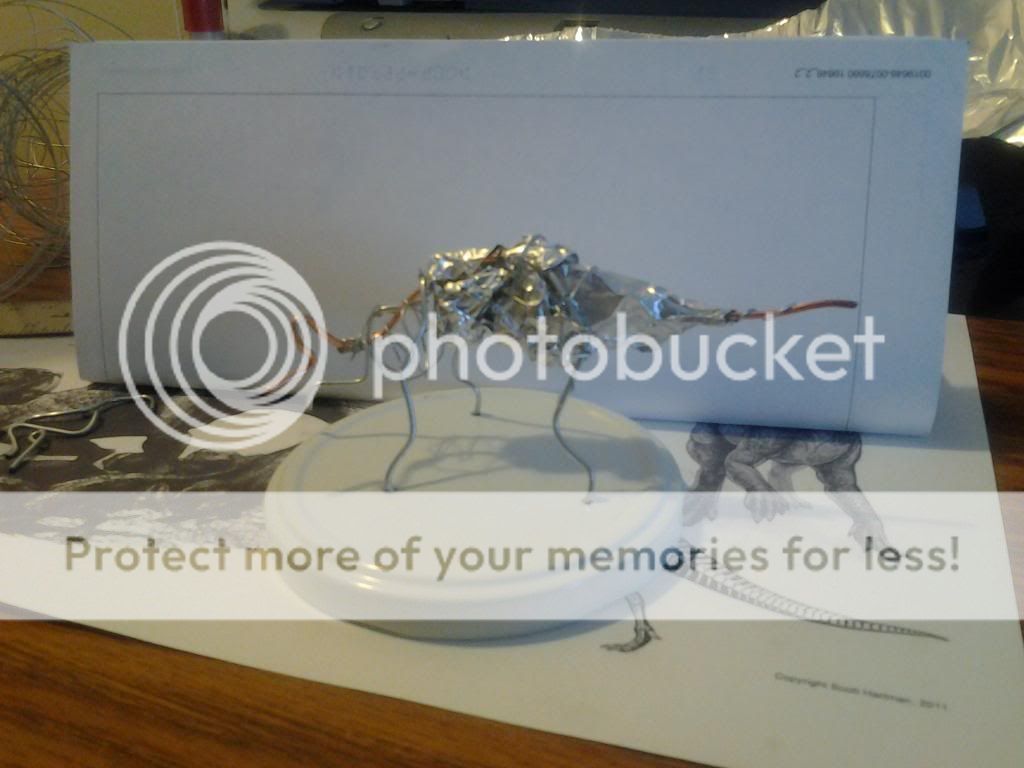It has been a very long time since I have sculpted anything. I have always considered my strengths to be more in two-dimensional art. But recently, I have been getting back into my old hobby of painting gaming miniatures, and eventually that has lead me to wanting to sculpt my own. My best friend and I have even been developing a tabletop miniatures game for the past few months (more on this in an upcoming post). But before I dove straight into the difficult task of sculpting on a minute scale, I need to test out my sculpting chops. In art school, I barely got the chance to really try most sculpting mediums. Through a bad professor, and a lack of opportunity, I was quickly turned off of the idea of making 3D art. But I have always been curious if I could.
Before diving straight in, I thought I would work my way down in scale. I have always wanted to have some nice sculptures of dinosaurs in my house. Though I will never have any real bronzes around, I thought perhaps I could make some faux bronzes. So, all these ideas lead me to test out my sculpting abilities on an anatomically correct dinosaur sculpture (the faux bronzes will come later).
Before diving straight in, I thought I would work my way down in scale. I have always wanted to have some nice sculptures of dinosaurs in my house. Though I will never have any real bronzes around, I thought perhaps I could make some faux bronzes. So, all these ideas lead me to test out my sculpting abilities on an anatomically correct dinosaur sculpture (the faux bronzes will come later).
Gathering up my materials, I chose a fairly simple specimen, but one not too common. Wanting something with a small frame with simple structures to model, I settled on Psittacosaurus, a bipedal protoiguanadon from the lower Cretaceous. I printed out my reference materials, including a side-view skeletal reconstruction at the scale I wanted to sculpt (1:16 scale).
Using the skeleton as a guide, I made my wireframe armature. These pieces of copper and steel wire, would not only allow me to pose my sculpt, but also ensure that my scale was anatomically accurate with the fossils. I laid each piece of wire onto the drawing and cut and bent them according to the bones.
Shaping a basic ribcage, and the triangular forms of the ilium, ischium and pubis bones, I gave the flat structure a bit of depth. I then moved and posed the limbs into the pose I wanted. Since this was my first attempt with this medium or with building armatures, I went with a fairly simple pose, and not as dynamic as I would have chosen were I simply drawing it. I then attached the armature to an old jar lid that would serve as my sculpture's base. Sadly, the lid was from a jar of salsa, which would lead my entire project to smell of old tacos for weeks.
To fill out the rest of the body's mass, I used balls of foil to wrap and stuff the torso. This would give the sculpture form I could sculpt onto, without using as much polyform clay. The oven cured medium I was sculpting with couldn't get too thick, so this eliminated anything getting too solid.
From there, it was a matter of covering the surface of the model with a thin layer of clay, and building up the basic shapes of the muscles. This is where the many angled paleoartist renditions came in handy, as well as the info I have learned from paleoartist Scott Hartman on prehistoric animal musculature. Years of learning to draw dinosaurs really paid off here. I simply shaped each muscle group and then wrapped them onto the skeletal frame.
Within a few hours of work, I had the basic shape of my Psittacosaurus. I made a track-filled muddy ground for his feet to rest on, then set about the biggest challenge, sculpting the distinct parrot-like head.
The final steps were the slow but fun process of detailing. This is where the fossil record is a little less helpful. Psittacosaurus fossils are distinct for the parrot-shaped beak that gives the creature its name, and the tuft of featherlike structures along the ridge of its tail. Apart from these features, I saw fit to experiment and trick my little guy out with all kinds of interesting details. An attempt to get a more interesting surface lead to large bony scutes, that would not have been on the animal, but made for a cool armored look.
After curing and priming, I set about painting my dinosaur. Dropping my idea to try for a faux bronze effect (that will have to wait for now) and try out some more unique pattern variation and miniature painting techniques. I wasn't as happy with it when I finished. But after a coat of matte finish, and a few weeks staring at it on the shelf, I have come to be quite proud of what might be my first great sculpture. My fiance has given me a few more lids, and so ideas are spinning for a few more dinos in this series before I move on to the challenge of fake bronze tabletop pieces. Before then, it has given me the confidence to go smaller and begin sculpting out my ideas for some gaming miniatures.
I have been bitten by the sculpting bug, so I hope to share much more of these creations in the upcoming months. Going from being a painter, to a digital artist was an easy transition. And while I miss putting oil on canvas, there is a lot of freedom in what I can do digitally. But I hadn't realized just how significant and enjoyable it can be to see my work having a physical presence again.









No comments:
Post a Comment